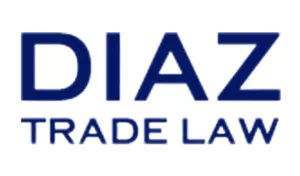In 2022, CBP announced significant new changes to the Customs Trade Partnership Against Terrorism (CTPAT) Trade Compliance Program. These announcements included six new member responsibilities and three new benefits, which this article discusses in more detail below.
The recent announcements demonstrate the heightened emphasize placed on forced labor compliance given concerns about the prevalence of forced labor in global supply chains-in particular, the forced labor and human rights violations faced by the Uyghur community of the Xinjiang Autonomous Region of China. As a result of these recent announcements, participating companies will play a greater role in assisting the US government reduce the prevalence of forced labor in global supply chains.
CTPAT Overview
Launched soon after the 9/11 attacks in November 2001, Customs Trade Partnership Against Terrorism (CTPAT) is a program administered by US Customs and Border Protection (CBP) to collaborate with the private sector to secure supply chains from terrorism. CTPAT is a voluntary security program in which eligible companies become CTPAT members.
In order to qualify for CTPAT certification, companies must have a documented process for identifying and preventing terrorism-related risk throughout their global supply chain. As a result, CTPAT member companies play a vital role in securing the US border. Member companies include importers, carriers, consolidated, licensed customs brokers, and manufacturers.
CTPAT members enjoy significant enforcement and operational benefits including:
- Priority CBP inspections
- Decreased CBP inspections / holds
- Potential mitigation of penalties
- CBP resources including specialists who can assist with evaluating and improving that company's supply chain
- Reduced inspections when exporting to certain other countries with which the United States maintains a mutual recognition arrangement
The CTPAT supply chain security program is comprised of three Tiers:
- CTPAT Tier 1. Private-sector companies that have had their application reviewed and approved, and now have the benefits of obligations of CTPAT membership.
- CTPAT Tier 2. In addition to the above requirements of Tier 1, CBP has inspected and confirmed that the company's documented procedures meet minimum security criteria.
- CTPAT Tier 3. In addition to the above requirements of Tiers 1 and 2, CBP has inspected and confirmed that the company's documented procedures exceed minimum security criteria.
Trade Compliance Program
In addition to participating in CTPAT, US importers who are Tier 2 or Tier 3 members of CTPAT can opt into the CTPAT Trade Compliance Program. The CTPAT Trade Compliance Program is a combination of two CBP programs: the general CTPAT program described above, and Importer-Self Assessment (ISA) Program, which no longer operates separately and is now solely a part of the CTPAT Trade Compliance Program.
The previous ISA program was also a voluntary program in which US importers and CBP partnered proactively to empower US importers to demonstrate their readiness to manage and monitor their import compliance through self-assessments. The program benefited CBP by permitting the agency to direct limited enforcement resources to non-ISA parties while the program benefited participating companies who can be more efficient and reduce enforcement risks.
Recent Changes
There have been significant changes to the CTPAT Trade Compliance Program announced in 2022. Effective, Aug. 1, 2022, all Importers participating in the CTPAT program had the ability to view the CTPAT Trade Compliance link in their profiles allowing eligible Importers to apply for the optional CTPAT Trade Compliance component of the CTPAT program. CBP reminded CTPAT participants to be eligible to apply for the CTPAT Trade Compliance component, Importers must be either Tier 2 (validated) or Tier 3 (validated-exceeding) and must meet all additional program requirements, including the CTPAT Trade Compliance Forced Labor requirements.
- In July 2022, CBP released the first version of the CTPAT Trade Compliance Handbook stating that CBP would issue further guidance on forced labor compliance in collaboration with the US Department of Homeland Security's Forced Labor policy. Accordingly, in October 2022, CBP released the CTPAT Trade Compliance Handbook, Version 2 detailing CBP's expectations as it relates to the addition of six new program requirements regarding the prevention of Forced Labor within the supply chain:
- Risk-Based Mapping. Members are required to conduct mapping of their supply chains with a focus on the segments with the highest risk for forced labor compliance.
- Code of Conduct. Members are required to publish a Code of Conduct statement asserting the business' commitment to forced labor compliance.
- Evidence of Implementation. Members are required to provide CBP with evidence of their forced labor compliance.
- Due Diligence & Training. Members are required to train their suppliers in order to collaborate and proactively identify forced labor risks in their supply chain.
- Remediation Planning. Members are required to develop and maintain a plan to quickly and meaningfully address any forced labor violations that may arise, and be able to transmit their information to CBP.
- Shared Best Practices. Members are encouraged to share best practices to combat forced labor with CBP.
In November 2022, CTPAT Director Manuel A. Garza, Jr. announced three new forced labor benefits to be provided by CBP effective immediately to members of the Trade Compliance program:
- Front of the Line Admissibility Review. CTPAT Trade Compliance partners who have shipments detained due to forced labor will have their admissibility packages prioritized for review by the appropriate CBP Center of Excellence and Expertise.
- Redelivery Hold. CTPAT Trade Compliance partners who have shipments arrive at their facility that are later determined to be held due to ties to forced labor, where redelivery is normally requested, may hold their shipments intact at their facility, rather than redelivering the goods to CBP until an admissibility determination is made or until such time that a physical inspection is required.
- Detained Withhold Release Order Shipments Move to Bonded Facility. CTPAT Trade Compliance partners who have a shipment detained by CBP due to a Withhold Release Order will be allowed to move the goods to a bonded facility to be held intact until such time that an admissibility determination is made by CBP.
Conclusion
The increased importance of forced labor compliance is not limited to the CTPAT program. US importers, exporters, freight forwarders, customs brokers, and other entities and individuals involved in international trade have an expanded responsibility to monitor, identify, and report forced labor violations.
The recent CBP announcements expand both the responsibilities and benefits of CTPAT Trade Compliance Program members, in order to increase US government-private sector collaboration to combat forced labor while providing additional incentives to encourage private sector engagement in this important program.
Originally published by Bloomberg Law.
The content of this article is intended to provide a general guide to the subject matter. Specialist advice should be sought about your specific circumstances.


